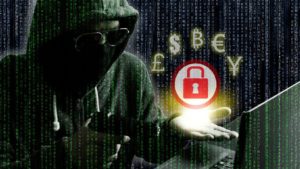Protecting Against Ransomware, Malware, and Other Viruses
The fight against ransomware, malware and other viruses is one that never ends and one that is continually changing. Most organizations implemented changes over the last couple years to help protect themselves from outside attacks. The issue is that as malware and ransomware continue to evolve, your network security needs to evolve as well. Your IT strategy needs to address certain elements and these elements needs to be continually adjusted and reevaluated to ensure you are protected against the latest attacks.

One area that is extremely important to have airtight protection is with email security. Email will remain the primary attack method threatening corporate cyber security, especially in the case of targeted attacks. Securing this vulnerability is essential to everybody, who runs a network or is connected to the internet. Most email attacks come in way of a basic email with an infected file attached to it. The cybercriminal doesn’t really require much knowledge to execute this type of attack. The best advice I have for organizations is that you need to teach your users to not open any emails or attachments from any sender they are unfamiliar with and that common sense should always prevail. The best strategy is if they aren’t sure if something is legit, contact their IT department immediately and let them handle it.
Another area that needs to get locked down is the security of the entire network and IT environment. If one machine gets infected, you need to ensure that this malware can’t be spread to other machines all over your network. Simple step to help is by implementing a data security software solution designed to check all incoming emails before they are delivered from their exchange server to the intended recipient. Another network software solution should be implemented to monitor the network and all the files. This type of solution would send an alarm if a ransomware tries to encrypt files in huge amounts over the network. These solutions also check frequently outgoing traffic, so when the ransomware tries to connect to their external server to start the encryption process, this could be terminated in an early state. These security solutions can only be effective if running at 100% efficiency. Make sure you regularly maintenance and patch these solutions.
The last tip that every organization needs to follow is to educate your employees not only on the safety measures they should follow, but what steps to take if they should get breached. A ransomware attack should not only be part of your IT strategy, but precise tips on what to do when breached should be hanging on a piece of paper on the wall in every office. Include steps such as disconnect from the internet and network, try to properly shut down the device, and immediately call your IT administrator.
Your IT department should always be informed best about the latest developments in cybersecurity. Reading the latest news articles, keeping up to date about new developments in this scene and loop holes in network or software solutions should therefore be a necessity for these employees. If you do not have a dedicated IT department, you need to make sure you have an IT Consultant that fills this role for you. Keeping your company secure is important, let the experts help you. Contact 2W Tech today if you need help with your IT security strategy and ongoing protection plan.
Read More:
Quick View of Epicor Product Configurator
What You Need to Know About ITAR Compliance
7 Steps to a Holistic Security Strategy
Interested in reading this article? Click the button below to download this asset.
Download “7 Steps to a Holistic Security Strategy” Now
7 Steps to a Holistic Security Strategy
Please complete the form to download the file.